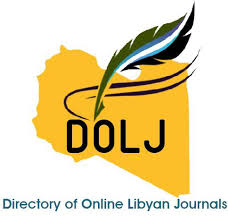Apply health Strategy Planning in (LNHS) to get Best Results and calculate data (NCDC)
DOI:
https://doi.org/10.54361/ljmr.17-01Keywords:
Libya, Health Services, Libyan National health service (LNHS ), National centerAbstract
This study presents a comprehensive health strategy tailored to the unique context of the (LCDC). This resulted in improvement in morbidity and mortality, in particularly those related to infectious disease. However, measures such as the national performance gap indicator reveal an underperforming health system. In this article, we discuss aspects related to the Libyan health system and its current status including areas of weakness. Overcoming current failures and further improvement are unlikely to occur spontaneously without proper planning. Defining community health problems, identifying unmet needs, surveying resources to meet them, establishing SMART, objectives, and projecting administrative action to accomplish the proposed programs, are a must. The health system should rely on newer approaches such as management-by-objectives and risk management rather than the prevailing crisis-management attitude. Also, the Coronavirus crisis that affected the entire world was one of the crises that contributed to diagnosing the current reality of the health system in Libya, and since the National Center for Disease Control (NCDC) was responsible, since the spread of the epidemic until now 2019-2023, to count the actual number of patients and injured. These objectives have been prioritized based on their potential impact and the LCDC's capacity to effectively address them. To ensure the strategy's success, regular monitoring and evalution will be conducted to assess the effectiveness and impact of implemented interventions. Adjustments and refinements will be made based on the findings. By implementing this comprehensive health strategy, the LCDC endeavors to address the pressing health challenges in Libya and achieve sustainable improvements in public health outcomes.
Downloads
References
Murray CJ, Frenk J. A framework for assessing the performance of health systems. Bull World Health Organ. 2000; 78:717–731.
Goodman NW. Please give us objectives we can aim at. J R Soc Med. 2002; 95:567.
Kawabata K. A new look at health systems. Bull World Health Organ. 2000; 78:716.
Bar-Yam Y. Improving the effectiveness of health care and public health: a multiscale complex systems analysis. Am J Public Health. 2006; 96:459–466.
Diallo K, Zurn P, Gupta N, Dal Poz M. Monitoring and evaluation of human resources for health: an international perspective. Hum Resour Health. 2003; 1:3.
Mays N, Pope C. Qualitative research in health care. Assessing quality in qualitative research. BMJ. 2000; 320:50– 52.
National corpus for information and documentation. Tripoli, Libya: 2003. Statistics Book 2003.
Sert, Libya: General Popular Committee for Health and Environnement; 2005. Annual Statistical Report 2004.
The Libyan National Committee for Education, Culture and Science. The International Conference on Education «Quality Education for all Young People: Challenges, trends and priorities». Geneva; Switzerland: 2004. The Development of Education In Great Jamahiriya.
Lakhani A, Coles J, Eayres D, Spence C, Sanderson C. Creative use of existing clinical and health outcomes data to assess NHS performance in England: part 2--more challenging aspects of monitoring. BMJ. 2005; 330:1486– 1492.
The General People's Committee for Health and Social affairs. The Libyan Arab Maternal and child Health Survey. Libya: Sert; 1996.
World Health Organization. Core Health Indicators. available at http://www3.who.Int/whosis la st accessed December 2007.
Singh R, Abudejaja A, Sudani O. Health Services; Current Achievements and Future Challenges. JMJ. 2005; 4:157– 166.
Beaglehole R, Dal Poz MR. Public health workforce: challenges and policy issues. Hum Resour Health. 2003; 1:4.
El Taguri A. Medical Tourism and the Libyan National Health Services. Libyan J Med. 2007 .
Ham C. Improving NHS performance: human behaviour and health policy. BMJ. 1999; 319:1490– 1492.
Ham C. From targets to standards: but not just yet. BMJ. 2005;330(7483):106– 107.
Declaration of Alma-Ata. WHO Chron. 1978; 32:428– 430.
El Taguri A AGH, Al Mgasbi K. Causes of Death among children in Benghazi during 1995; Third Jamahiriya Conference of Medical Sciences; Tripoli, Libya: 1996.
Mays GP, McHugh MC, Shim K, Perry N, Lenaway D, Halverson PK, Moonesinghe R. Institutional and economic determinants of public health system performance. Am J Public Health. 2006; 96:523– 531.
Saltman RB, Ferroussier-Davis O. The concept of stewardship in health policy. Bull World Health Organ. 2000; 78:732–739.
McPake B, Mills A. What can we learn from international comparisons of health systems and health system reform? Bull World Health Organ. 2000; 78:811– 820.
Musgrove P. Health insurance: the influence of the Beveridge Report. Bull World Health Organ. 2000; 78:845–846.
Feachem RG. Health systems: more evidence, more debate. Bull World Health Organ. 2000; 78:715.
Scally G, Donaldson LJ. The NHS's 50 anniversary. Clinical governance and the drive for quality improvement in the new NHS in England. BMJ. 1998; 317:61– 65.
Bahamon C, Dwyer J, Buxbaum A. Leading a change process to improve health service delivery. Bull World Health Organ. 2006; 84:658– 661. discussion 662–653.
Freeman T, Walshe K. Achieving progress through clinical governance? A national study of health care managers’ perceptions in the NHS in England. Qual Saf Health Care. 2004; 13:335– 343
Bodenheimer T. Primary care--will it survive? N Engl J Med. 2006;355:861– 864.
Woo B. Primary care--the best job in medicine? N Engl J Med. 2006;355:864– 866.
Park K. Park's Textbook of Preventive and Social Medicine. 14th ed. Jabalpur (India): M/s Banarsidas Bhanot Publishers; 1995.
Bakoush O, Elgzyri T. Do we have a diabetes epidemic in Libya? Libyan J Med. 2006;1.
El Taguri A. The need to introduce Telemedicine in Libya; First Libyan conference on medical specialties: 1997; Benghazi: 1997.
Mounir Khalil, Ray Jones. Electronic Health Services; An Introduction to Theory and Application. Libyan J Med. 2007;2(4).
Giaedi T. The Impact of Electronic Medical records on improvement of health care delivery. Libyan J Med. 2007.
El Taguri A, Rolland-Cachera MF, Mahmud Salaheddin M, Elmrzougi N, Abdel Monem A, Betilmal I, Lenoir G. Nutritional status of under-five children in Libya: a national population-based survey. Libyan J Med. 2007 .
Aaron H. Health Policy Issues & Options, Policy Brief # 147. 2005. Health Care Rationing: What it Means.
Beveridge W. Social insurance and allied services. 1942. Bull World Health Organ. 2000; 78:847– 855.
Leatherman S, Sutherland K. Quality of care in the NHS of England. BMJ. 2004; 328: E288– 290.
Wyss K. An approach to classifying human resources constraints to attaining health-related Millennium Development Goals. Hum Resour Health. 2004; 2:11.
Health InterNetwork Access to Research Initiative (HINARI) project, World Health Organization. 2007. available at http://www.who.int/hinari/en/ last accessed September.
Wensing M. Evidence-based patient empowerment. Qual Health Care. 2000; 9:200–01.
Thomson R. Quality to the fore in health policy--at last. But the NHS mustn't encourage quality improvement with punitive approaches. BMJ. 1998; 317:95– 96.
Wilcock PM, Thomson RG. Modern measurement for a modern health service. Qual Health Care. 2000; 9:199–200.
Arah OA, Klazinga NS, Delnoij DM, ten Asbroek AH, Custers T. Conceptual frameworks for health systems performance: a quest for effectiveness, quality, and improvement. Int J Qual Health Care. 2003; 15:377– 398.
Lakhani A, Coles J, Eayres D, Spence C, Rachet B. Creative use of existing clinical and health outcomes data to assess NHS performance in England: Part 1--performance indicators closely linked to clinical care. BMJ. 2005; 330:1426– 1431.
Donabedian A. Evaluating physician competence. Bull World Health Organ. 2000; 78:857– 860.
Downloads
Published
Issue
Section
License
Copyright (c) 2023 Libyan Journal of Medical Research

This work is licensed under a Creative Commons Attribution-NonCommercial-NoDerivatives 4.0 International License.
Open Access Policy
Libyan journal of medical Research (LJMR).is an open journal, therefore there are no fees required for downloading any publication from the journal website by authors, readers, and institution.
The journal applies the license of CC BY (a Creative Commons Attribution 4.0 International license). This license allows authors to keep ownership f the copyright of their papers. But this license permits any user to download , print out, extract, reuse, archive, and distribute the article, so long as appropriate credit is given to the authors and the source of the work.
The license ensures that the article will be available as widely as possible and that the article can be included in any scientific archive.
Editorial Policy
The publication of an article in a peer reviewed journal is an essential model for Libyan journal of medical Research (LJMR). It is necessary to agree upon standards of expected ethical behavior for all parties involved in the act of publishing: the author, the journal editorial, the peer reviewer and the publisher.
Any manuscript or substantial parts of it, submitted to the journal must not be under consideration by any other journal. In general, the manuscript should not have already been published in any journal or other citable form, although it may have been deposited on a preprint server. Authors are required to ensure that no material submitted as part of a manuscript infringes existing copyrights, or the rights of a third party.
Authorship Policy
The manuscript authorship should be limited to those who have made a significant contribution and intellectual input to the research submitted to the journal, including design, performance, interpretation of the reported study, and writing the manuscript. All those who have made significant contributions should be listed as co-authors.
Others who have participated in certain substantive aspects of the manuscript but without intellectual input should only be recognized in the acknowledgements section of the manuscript. Also, one of the authors should be selected as the corresponding author to communicate with the journal and approve the final version of the manuscript for publication in the LJMR.
Peer-review Policy
- All the manuscripts submitted to LJMR will be subjected to the double-blinded peer-review process;
- The manuscript will be reviewed by two suitable experts in the respective subject area.
- Reports of all the reviewers will be considered while deciding on acceptance/revision or rejection of a manuscript.
- Editor-In-Chief will make the final decision, based on the reviewer’s comments.
- Editor-In-Chief can ask one or more advisory board members for their suggestions upon a manuscript, before making the final decision.
- Associate editor and review editors provide administrative support to maintain the integrity of the peer-review process.
- In case, authors challenge the editor’s negative decision with suitable arguments, the manuscript can be sent to one more reviewer and the final decision will be made based upon his recommendations.














